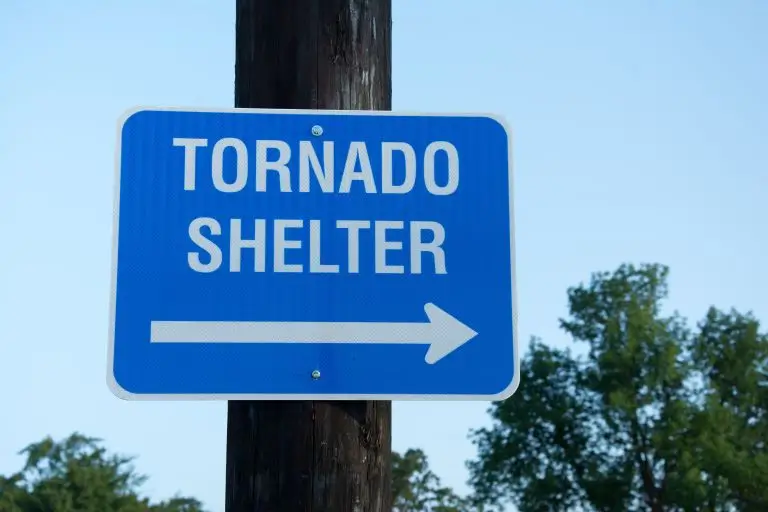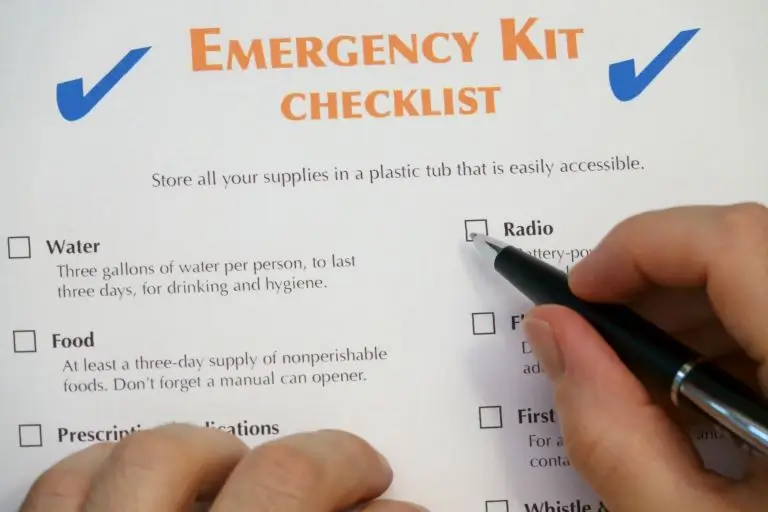Since tornado season is approaching, you may find yourself wondering if you’re truly prepared for nature’s most violent storms. While the thought of a twister coming to your area can be terrifying, having a solid preparedness plan in place can help ease your mind and potentially save lives. In this comprehensive guide, you’re going to discover everything you need to know about storm preparation, from creating an emergency kit to identifying the safest spots in your home.
By following the tornado safety tips in this blog post, you’re going to be equipped to face even the most severe weather with confidence and peace of mind.
Understanding the Tornado Threat and Preparing: Recognizing the Warning Signs
Decoding Nature
Recognizing the warning signs of an impending tornado is essential for your safety. Keep an eye out for dark or often greenish skies, which could indicate some severe weather. Large hail and a loud roar, similar to a freight train, are also telltale signs. Pay attention to sudden calmness after a thunderstorm, as this eerie silence often precedes a tornado.
Meteorological Alerts: Your First Line of Defense
Stay informed by monitoring local weather reports or heeding official warnings. A tornado watch means conditions are favorable for tornadoes to form, while a tornado warning indicates that a tornado has been sighted or indicated by weather radar. Invest in a NOAA Weather Radio for real-time updates, even during power outages.
When to Take Action
Don’t wait until there’s a tornado to react. If conditions are ripe for a tornado, or if warnings are issued, seek safe shelter immediately in a basement or an interior room on the lowest floor of a sturdy building. Time is of the essence – tornadoes can develop rapidly, leaving little time to prepare once they’re on the ground. By understanding these warning signs and acting swiftly, you significantly increase your chances of staying safe during a tornado strike.
Building Your Tornado Preparedness Kit: The Essential Supplies for Safety
Survival Essentials
When preparing for a tornado, assembling an emergency kit is essential. Start with the basics: a sturdy, waterproof container to hold your supplies. Include enough non-perishable food and water to last at least 72 hours for each person in your household. Don’t forget manual can openers and the usual utensils. Pack a first aid kit, prescription medications, and personal items such as eyeglasses or contact lenses.
Power
In the aftermath of a tornado, staying informed and connected is important. Keep a battery-powered or hand-crank radio to receive weather updates and emergency information.
Pack extra batteries and a portable phone charger. A flashlight or headlamp is essential for navigating in the dark. Consider adding light sticks or battery-powered lanterns for extended power outages.
Protection
Ensure your kit includes items for personal protection and comfort. Pack some sturdy shoes, clothing, and blankets or sleeping bags. Bring some dust masks, work gloves, and plastic sheeting for emergency shelter. Don’t forget personal hygiene items like hand sanitizer, toilet paper, and your feminine supplies. Add a whistle to signal for help and a multi-tool for various emergency needs.
Remember to customize your kit based on your family’s specific needs, including items for infants, elderly family members, or pets. Regularly check or update your supplies.

Choosing The Right Shelter: Finding The Best Space in The Home
When preparing for a tornado, selecting the right shelter within your home is important for your safety. The ideal location should be on the lowest level of your house, away from windows and exterior walls.
Your Basement
If you have a basement, it’s typically the safest option. Head to the center of the basement or a corner closest to the direction from which the storm usually approaches.
Interior Rooms on Your Ground Floor
For homes without basements, choose a small, interior room on the lowest floor. Bathrooms, closets, or hallways often work well. Look for spaces with sturdy walls and minimal windows.
Reinforce Your Safe Space
Whichever location you choose, reinforce it with essential supplies. Keep a battery-powered radio, flashlights, first-aid kit, and non-perishable food items in your designated shelter. Consider installing some sort of tornado shelter or safe space for maximum protection, especially if you live in a tornado-prone area.
Remember, the key is to put as many walls as possible between you and the outdoors. By choosing and preparing the right shelter, you’re going to significantly increase your chances of weathering the storm.
Protecting Property: Securing Your Home Against Tornado Damage
When it comes to safeguarding your home against tornado damage, a proactive approach is essential. By taking these measures, you are significantly reducing the risk of destruction and ensuring safety.
Reinforcing Structure
Start by focusing on your home’s weakest points. Secure your roof by installing hurricane straps or clips to connect it firmly to the walls. Reinforce doors, especially your garage doors, with heavy-duty hinges and bolts. For windows, consider installing impact-resistant glass or storm shutters to protect against flying debris.
Creating Your Safe Room
Designate a windowless interior room on the lowest floor of your home as a safe room. Reinforce this area with additional support beams and sturdy materials. Stock it with emergency supplies.
Landscaping to Improve Protection
Your yard can serve as a first line of defense. Trim trees regularly to remove dead or weak branches that could become projectiles in high winds. Secure all the outdoor furniture, decorations, and other loose items that could be lifted by strong gusts. Consider replacing gravel or rock landscaping materials with softer alternatives like mulch or shredded bark to reduce the risk of wind-driven missiles.
By implementing these protective measures, you’re going to be better prepared to weather the storm and minimize the potential tornado damage to your property.
Staying Informed and Communicating During a Tornado: Crucial Tips
Monitor Weather Updates Continuously
During tornado season, staying informed is your lifeline. Keep a battery-powered NOAA weather radio nearby for real-time alerts. Supplement this with apps from a reputable national weather service.
Establish Your Communication Plan
Before disaster strikes, create a family communication plan. Designate an out-of-area contact as a central point of communication. Ensure everyone knows how to reach this person if lines are jammed.
Utilize Emergency Alert Systems
Many areas offer text or email notifications for severe weather. These systems can provide essential information about evacuation routes, shelter locations, and other details during the tornado emergency.
Master Non-Verbal Communication
In the chaos of a tornado, verbal communication might be challenging. Learn and teach your family basic hand signals for “help,” “all clear,” and “danger.”
Remember, staying informed and maintaining clear communication channels can significantly increase your chances of safely weathering a tornado. Always prioritize these aspects in your preparedness plan.
Receive a FREE Phone to Stay Connected!
While trying to weather severe storms, how about also giving yourself the right tools to maintain communication while also staying connected with friends and family?
Were you aware that you could qualify for free phone service or free phones? That’s right, thanks to EASY Wireless and Lifeline!
Applying With EASY Wireless
The easiest way is to apply online by clicking below:
Were you aware that you could qualify for free phone service or free phones? That’s right, thanks to EASY Wireless and Lifeline!
Start Saving Today!
Find Your Nearest EASY Wireless Store
Another way is to come to one of EASY Wireless’s retail stores, where its customer service support team helps you apply for the benefits.
Either way, the first step is to provide proof of identity with a government-issued ID. This is so you can confirm your participation in one of the qualifying programs or that you meet the income requirement.


